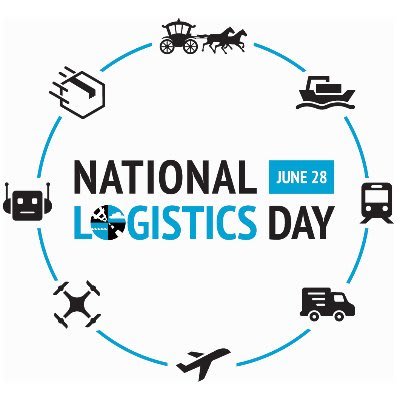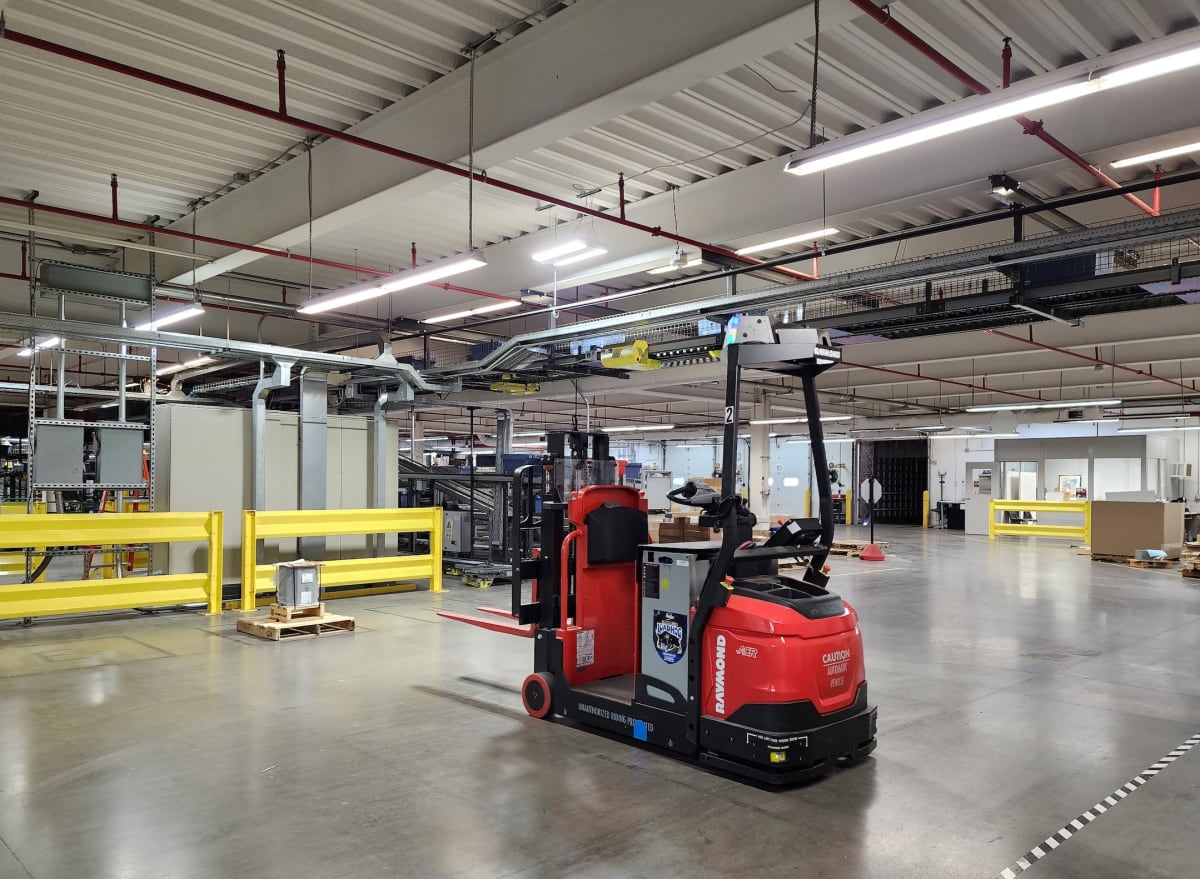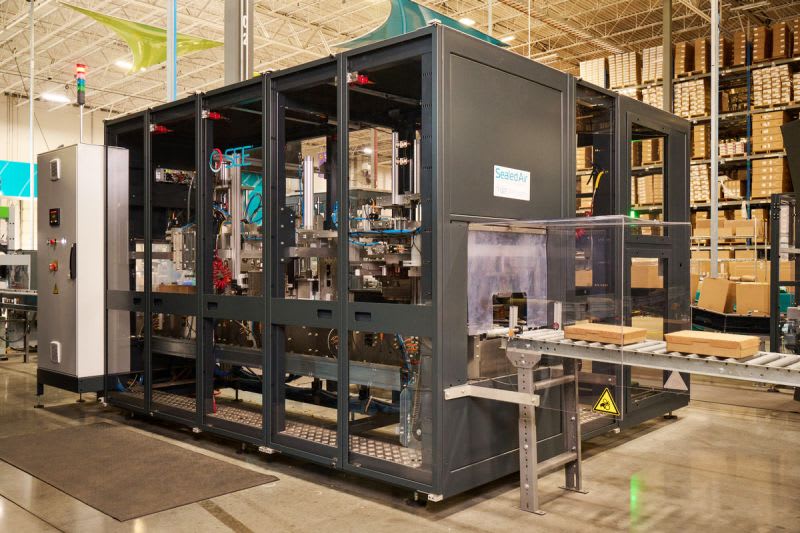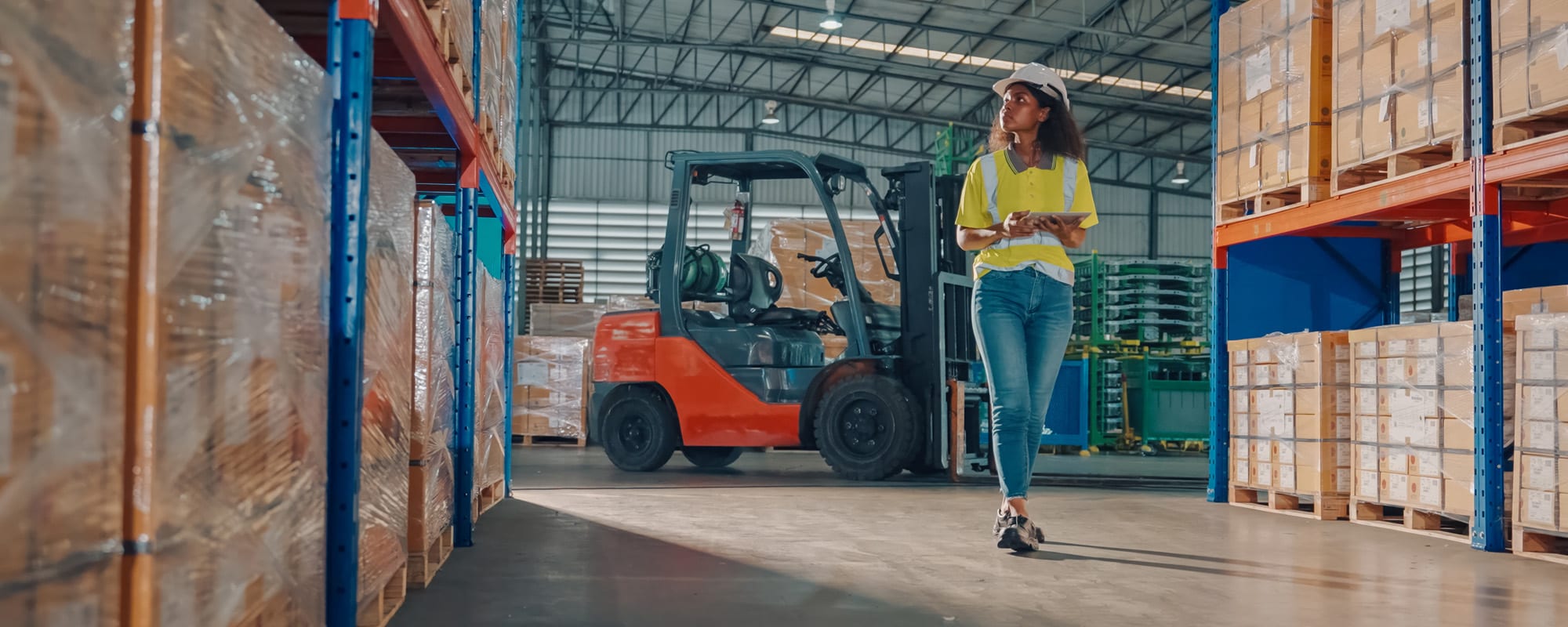Industry 4.0 technologies are revolutionizing the global logistics industry. In celebration of National Logistics Day, we spotlight four innovative logistics technologies that are driving continuous improvement and reshaping how goods move around the world: goods-to-person robots, automated storage and retrieval systems, automated case erectors and packaging systems, and augmented reality.
The movement of goods around the world has never been faster than it is today, and rising demand for more expeditious, accurate, cost-effective, scalable, and sustainable service is driving supply chains and prevailing manual logistics processes to capacity and beyond.
In the age of Industry 4.0, industrial automation, digitalization, and digital commerce, logistics plays an impactful role in facilitating the global movement of goods with the speed and precision that customers demand. Logistics — which encompasses the transportation, distribution, and warehousing of goods manufactured from raw materials — is essential in mobilizing the supply chain. The global logistics industry powers the forward and reverse current of goods, services, and information from their respective points of origin to their points of consumption and, in 2022 was valued at over $9.8 trillion and projected to reach $16.8 trillion by 2032.
However, according to a 2021 study by Research and Markets, more than 80% percent of warehouses weren’t using automation at all, making them more susceptible to human error, safety risks, and labor shortages. The logistics industry has since begun to replace some of its many manual processes with automated processes — including digitized order-picking processes, conveyor belts, picking carousels, and robotics — and is on pace to continue that trend.

In fact, the global logistics automation market is projected to grow to $51.2 billion in 2028 from just $32.7 billion in 2023. This rapid $18 billion uptick in growth isn’t difficult to justify, as the logistics industry is essential to maintaining the intricate balance between supply and demand and ensuring that goods reach their final destinations seamlessly and efficiently.
In honor of the critical role that logistics operations play in the global supply chain and the millions of hardworking professionals whose labor fuels the increasingly fast-paced flow of goods, the United States House of Representatives followed the lead of several states, including Pennsylvania, and issued a congressional record recognizing June 28 as National Logistics Day as an official holiday in 2022.
In celebration of this new holiday and anticipation of the industry’s continued evolution, we’re showcasing four cutting-edge Industry 4.0 and logistics automation technologies poised to boost efficiency, enhance worker safety, improve fulfillment accuracy, lower labor costs, and keep global supply chains moving at top speed: goods-to-person robots, automated storage and retrieval systems, automatic box erector and packaging systems, and augmented reality.
Goods-to-Person Robots
Goods-to-Person (GTP) automation is an innovative approach that enhances the order-picking process in warehouses. In traditional picking methods, human workers traverse vast storage spaces to retrieve items for orders, which is time-consuming and prone to errors and the impacts of widespread labor shortages. GTP automation creates a paradigm shift. Instead of workers spending precious resources to retrieve goods from storage, the goods are delivered to the workers via GTP robots.
These machines, which include automated guided vehicles (AGVs) and autonomous mobile robots (AMRs), are smart robots equipped with advanced range sensors, laser navigation, and vision systems to help move items within the warehouse. The most notable difference between these two types of GTP robots is their movement capabilities. AGVs follow fixed paths or parameters that are predefined by magnets, wires, tape, or other physical boundaries. Unlike their more rigid counterparts, AMRs can perceive the environment around them and navigate their own paths based on the inputs gathered by their sensors. Both AGVs and AMRs are guided by fleet management software that govern and orchestrate their movement in a warehouse. These robots follow the most streamlined routes, prioritize urgent orders, and cut down retrieval times. GTP robots can also be equipped with different attachments, like conveyor belts or forks for pallets, making them flexible tools for transporting goods.

When orders are received, GTP automation software identifies where items are located and dispatches robots to retrieve them and deliver them to picking stations. Once a GTP robot delivers an order, it can collaborate with its human counterparts — who are now free to focus on more skilled-labor activities — to check orders and move them to fulfillment. As such, GTP robots help warehouses improve their efficiency and accuracy and reduce their reliance on manual labor, which improves employee safety and satisfaction, minimizes operational risks resulting from injuries and labor shortages, and can even help lower labor costs.
Automated Storage and Retrieval Systems
Automated storage and retrieval systems (AS/RS) are a class of GTP robot that specializes in retrieving and storing goods. These robots, like AGVs and AMRs, utilize smart software and sensors to efficiently store and retrieve items within a warehouse or storage facility but are built into storage infrastructure instead of made to navigate warehouse floors. AS/RS are designed to follow predefined routes to access items and are broadly categorized as either unit-load systems, mini-load systems, carousel-based systems, and vertical lift modules. Unit-load AS/RS are designed for handling larger loads, like full pallets or cases, and often utilize cranes that can navigate fixed and moveable aisles and tote objects weighing several thousand pounds. Mini-load AS/RS, however, are meant for lighter loads, like cartons or trays, and typically utilize smaller cranes or shuttles designed to operate in narrow aisles to move items. Carousel-based systems use a rotating mechanism to bring the desired shelf or bin to a fixed inserter or extractor, which then places or retrieves the item. Similarly, vertical lift modules (VLMs) operate with an inserter extractor located in the center of an enclosed structure, accessing trays stacked in columns on either side.

Regardless of configuration, AS/RS offer significant advantages for warehouses and storage facilities, including fewer employee safety risks, reduced manual labor costs, improved order accuracy and efficiency, and the ability to operate in challenging environments like freezer storage and high vertical spaces. AS/RS technology can even unlock more usable storage space in warehouses. For example, RS’s own warehouse in Ft. Worth, Texas uses AS/RS systems to cut down on wasted open areas in favor of compact racks fitted with shuttle systems. These robots expeditiously deliver and receive goods in the dense storage space — allowing for more optimized storage spaces and boosting the overall productivity of RS warehouse operations.
Automated Case Erectors and Packaging Systems
Once orders are picked by GTP robots and their human coworkers, automated case erectors and automated packaging systems streamline box assembly and packing processes. Automated case erectors build boxes using pre-sized cardboard forms and seal them with hot glue, which saves warehouses considerable time and labor costs and enhances overall operational efficiency. They are especially helpful in high-volume packaging operations, where the demands of busy production lines can be met with incomparable speed and productivity, and they often work alongside fillers, sealers, and labeling systems, creating a seamless packaging ecosystem. In contrast to automated case erectors, automated packaging machines cut a bespoke box for each order, creating the precise container based on product dimensions in order to minimize material waste, which can lead to significant cost savings as well as more sustainable operations.

Organizations committed to sustainable logistics practices can also create boxes out of recyclable or compostable packaging materials using both of these logistics automation technologies. RS, for instance, uses the SEALED AIR brand I-Pack void reduction system to right-size packages for their contents, which conserves materials, maximizes the efficiency of transportation space, and reduces their carbon footprint. We also use sustainable packaging materials that contain 50% recycled material and are broadly (94%) recyclable or compostable.
Augmented Reality
Augmented reality (AR) is another technology that is driving efficiency and digital transformation in the logistics industry. AR devices, such as headsets, smart glasses, tablets, and smartphones, layer digital data onto physical realities, allowing workers to access real-time information without disrupting workflows. These devices — outfitted with built-in cameras, displays, and even voice control capabilities — enable workers to seamlessly interact with digital interfaces while simultaneously viewing the real world around them.
AR’s innovative capabilities are built on software applications that synthesize data from the real world to create the digital overlays that employees can interact with through AR devices that leave their hands free. In addition to AR’s robust software foundation, hardware like cameras and sensors help AR capture environmental information and how users behave or interact in it. These physical devices enable the accurate population of virtual elements via user gestures and voice recognition.
AR applications vary from straightforward visual aids to intricate interactive systems and, in the logistics industry, are often used to display important inventory, navigation, safety, and task management information in real-time. For instance, AR devices utilized in a warehouse could present users with efficient routes for order picking, confirm the success of a pick to reduce operational errors, and even improve job training and, in turn, employee retention. AR devices can also be integrated into existing warehouse management systems (WMS) and transportation management systems (TMS) that use data analytics tools to provide operators with valuable insights into inventory levels, equipment status, and workflows that enable more efficient space utilization, predictive maintenance strategies, and route optimization. And AR solutions suppliers are actively leveraging Big Data and AI to further improve AR’s competencies in these areas to deliver even more refined analytics and modeling that will enable logistics professionals to tackle challenges even more effectively.
Revolutionizing the Logistics Industry With Industry 4.0 Technologies
Innovative Industry 4.0 technologies like these are helping the logistics industry evolve to satisfy rising demand for faster, cheaper, more accurate, scalable, and sustainable fulfilment services and, in turn, improving the safety, satisfaction, and efficiency of the millions of laborers essential to this nearly $10 trillion — and rapidly growing — industry. RS is proud to be an early adopter of logistics automation technologies, including conveyor belts, goods-to-person robots, automated storage and retrieval systems, and automated packing machines, that have allowed us to optimize the efficiency, reliability, safety, and sustainability of our logistics operations and better serve our customers. We’re also proud to support customers throughout the increasingly automated logistics industry with our extensive selection of industrial product and service solutions — many of which are engineered to enable, enhance, and maintain automated systems in industrial market segments — as well as our substantial knowledge of and experience with both. For more information, check out our collection of RS Expert Advice articles about material handling and packaging. For assistance deploying and maintaining logistics automation solutions, please contact your local RS representative at 1.866.433.5722 or reach out to the RS technical support team.








